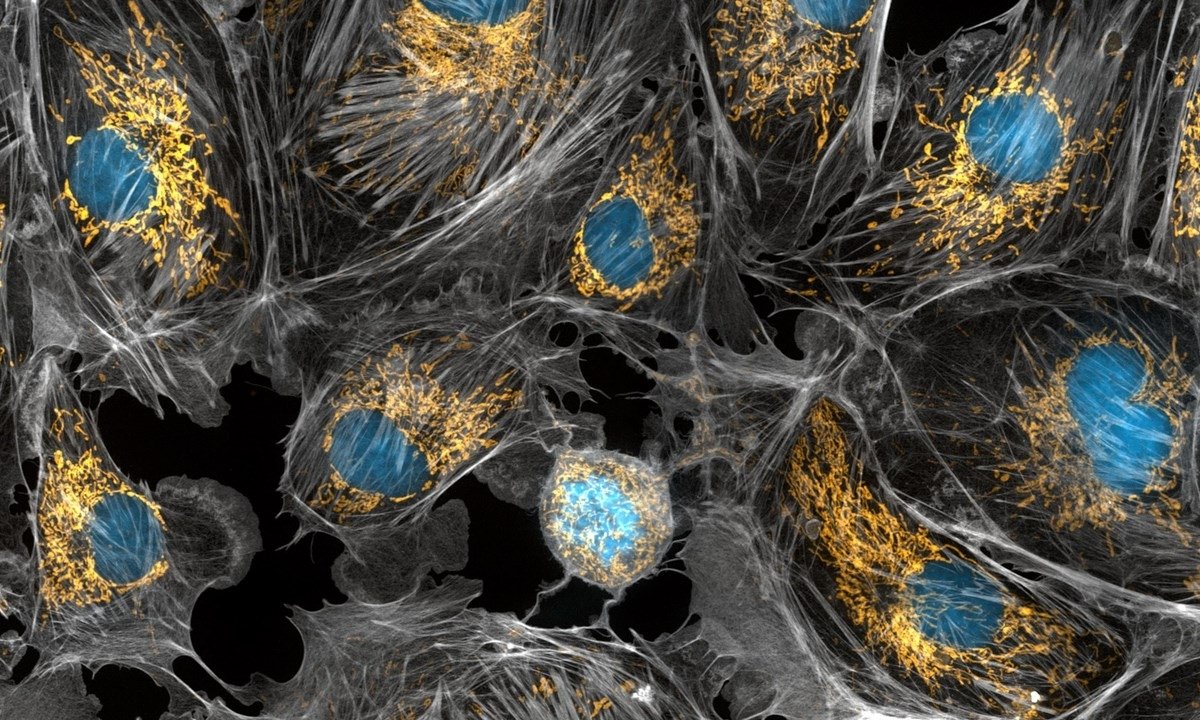
Endosymbiosis is a fascinating concept that explains how certain organelles within eukaryotic cells, like mitochondria and chloroplasts, originated from once free-living bacteria. This theory, first proposed by Lynn Margulis in the 1960s, revolutionized our understanding of cell evolution. Endosymbiosis suggests that a symbiotic relationship formed when a larger host cell engulfed smaller prokaryotic cells, which then evolved into essential cellular components. This process not only highlights the complexity of life but also underscores the interconnectedness of all living organisms. Dive into these 39 intriguing facts about endosymbiosis to uncover the secrets behind this evolutionary milestone and its impact on modern biology.
What is Endosymbiosis?
Endosymbiosis is a fascinating concept in biology where one organism lives inside another in a mutually beneficial relationship. This theory explains how complex cells, or eukaryotes, evolved from simpler ones. Let's dive into some intriguing facts about endosymbiosis.
-
The term "endosymbiosis" comes from Greek words meaning "inside" and "living together."
-
Lynn Margulis, an American biologist, popularized the endosymbiotic theory in the 1960s.
-
Mitochondria, the powerhouse of cells, are believed to have originated from free-living bacteria.
-
Chloroplasts, responsible for photosynthesis in plants, also have bacterial origins.
-
Endosymbiosis is thought to have occurred around 1.5 to 2 billion years ago.
-
Mitochondria and chloroplasts have their own DNA, separate from the cell's nuclear DNA.
-
Both mitochondria and chloroplasts replicate independently within the cell.
-
The DNA of mitochondria and chloroplasts is circular, similar to bacterial DNA.
-
Antibiotics that target bacteria can also affect mitochondria and chloroplasts.
-
Some modern-day organisms still exhibit endosymbiotic relationships, like the pea aphid and its bacterial symbionts.
How Endosymbiosis Shaped Evolution
Endosymbiosis played a crucial role in the evolution of life on Earth. It allowed for the development of more complex organisms by combining the strengths of different species.
-
Endosymbiosis led to the rise of eukaryotic cells, which are more complex than prokaryotic cells.
-
Eukaryotic cells have organelles, specialized structures that perform specific functions, thanks to endosymbiosis.
-
The evolution of multicellular organisms was made possible by the increased complexity of eukaryotic cells.
-
Endosymbiosis contributed to the diversity of life forms by enabling new metabolic pathways.
-
The ability to perform photosynthesis in plants and algae is a direct result of endosymbiosis.
-
Some scientists believe that endosymbiosis could explain the origin of other organelles, like the nucleus.
-
Endosymbiosis may have occurred multiple times throughout evolutionary history.
-
The endosymbiotic theory challenges the traditional view of evolution as a slow, gradual process.
-
Horizontal gene transfer, the exchange of genetic material between different species, is a key aspect of endosymbiosis.
-
Endosymbiosis highlights the importance of cooperation and symbiosis in evolution.
Modern Examples of Endosymbiosis
Endosymbiosis isn't just a thing of the past. Many modern organisms still rely on this relationship for survival.
-
Coral reefs depend on endosymbiotic algae called zooxanthellae for energy.
-
Termites harbor endosymbiotic bacteria in their guts to help digest wood.
-
The Hawaiian bobtail squid has a symbiotic relationship with bioluminescent bacteria.
-
Some sea slugs incorporate chloroplasts from algae into their own cells, allowing them to photosynthesize.
-
Certain insects, like the tsetse fly, rely on endosymbiotic bacteria for essential nutrients.
-
The pea aphid's endosymbiotic bacteria provide it with amino acids not found in its diet.
-
Some plants have endosymbiotic fungi called mycorrhizae that help with nutrient absorption.
-
The relationship between legumes and nitrogen-fixing bacteria is another example of endosymbiosis.
-
Endosymbiotic relationships can be found in extreme environments, like hydrothermal vents.
-
Some protists have endosymbiotic algae that provide them with energy through photosynthesis.
The Future of Endosymbiosis Research
Research on endosymbiosis continues to uncover new insights into the complexities of life and evolution.
-
Scientists are exploring the potential of endosymbiosis in biotechnology and medicine.
-
Understanding endosymbiosis could lead to new treatments for diseases involving mitochondrial dysfunction.
-
Researchers are investigating the role of endosymbiosis in the development of antibiotic resistance.
-
Endosymbiosis studies could provide clues about the origins of life on Earth.
-
The discovery of new endosymbiotic relationships could reveal unknown aspects of biology.
-
Advances in genetic sequencing are helping scientists study endosymbiosis in greater detail.
-
Endosymbiosis research is shedding light on the evolution of complex traits and behaviors.
-
Some scientists are exploring the possibility of engineering new endosymbiotic relationships for agricultural benefits.
-
The study of endosymbiosis continues to challenge and expand our understanding of life's interconnectedness.
The Big Picture
Endosymbiosis is a fascinating concept that reshaped our understanding of life's evolution. It explains how complex cells, like those in plants and animals, evolved from simpler ones. This theory highlights the importance of cooperation in nature, showing that life thrives through partnerships. By studying endosymbiosis, scientists gain insights into the origins of mitochondria and chloroplasts, which are crucial for energy production and photosynthesis. This knowledge not only deepens our grasp of biology but also opens doors to new biotechnological advancements. Understanding these ancient relationships helps us appreciate the interconnectedness of all living things. So, next time you look at a plant or ponder human cells, remember the tiny ancient partnerships that made it all possible. Endosymbiosis is a reminder that collaboration, even at the microscopic level, can lead to extraordinary outcomes.
Was this page helpful?
Our commitment to delivering trustworthy and engaging content is at the heart of what we do. Each fact on our site is contributed by real users like you, bringing a wealth of diverse insights and information. To ensure the highest standards of accuracy and reliability, our dedicated editors meticulously review each submission. This process guarantees that the facts we share are not only fascinating but also credible. Trust in our commitment to quality and authenticity as you explore and learn with us.
